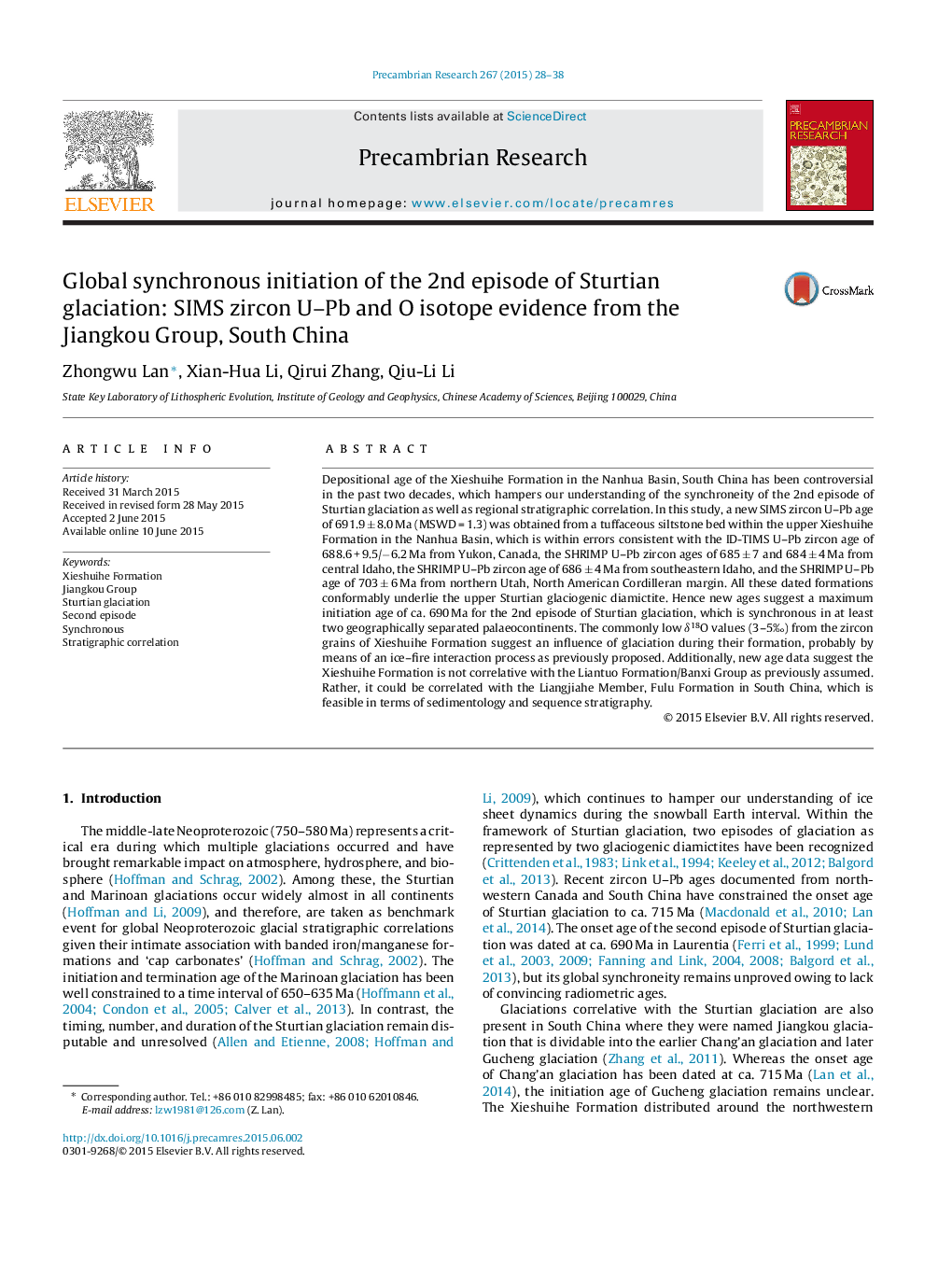| کد مقاله | کد نشریه | سال انتشار | مقاله انگلیسی | نسخه تمام متن |
|---|---|---|---|---|
| 4722605 | 1639608 | 2015 | 11 صفحه PDF | دانلود رایگان |

• ca. 690 Ma SIMS U–Pb zircon ages were obtained from the Xieshuihe Formation, South China.
• New ages suggest a synchronous initiation of the second episode of Sturtian glaciation at ca. 690 Ma.
• New ages support the correlation of Xieshuihe Formation with Fulu Formation.
• Oxygen isotopes may suggest a glacial influence of the zircon grains during its formation.
Depositional age of the Xieshuihe Formation in the Nanhua Basin, South China has been controversial in the past two decades, which hampers our understanding of the synchroneity of the 2nd episode of Sturtian glaciation as well as regional stratigraphic correlation. In this study, a new SIMS zircon U–Pb age of 691.9 ± 8.0 Ma (MSWD = 1.3) was obtained from a tuffaceous siltstone bed within the upper Xieshuihe Formation in the Nanhua Basin, which is within errors consistent with the ID-TIMS U–Pb zircon age of 688.6 + 9.5/−6.2 Ma from Yukon, Canada, the SHRIMP U–Pb zircon ages of 685 ± 7 and 684 ± 4 Ma from central Idaho, the SHRIMP U–Pb zircon age of 686 ± 4 Ma from southeastern Idaho, and the SHRIMP U–Pb age of 703 ± 6 Ma from northern Utah, North American Cordilleran margin. All these dated formations conformably underlie the upper Sturtian glaciogenic diamictite. Hence new ages suggest a maximum initiation age of ca. 690 Ma for the 2nd episode of Sturtian glaciation, which is synchronous in at least two geographically separated palaeocontinents. The commonly low δ18O values (3–5‰) from the zircon grains of Xieshuihe Formation suggest an influence of glaciation during their formation, probably by means of an ice–fire interaction process as previously proposed. Additionally, new age data suggest the Xieshuihe Formation is not correlative with the Liantuo Formation/Banxi Group as previously assumed. Rather, it could be correlated with the Liangjiahe Member, Fulu Formation in South China, which is feasible in terms of sedimentology and sequence stratigraphy.
Journal: Precambrian Research - Volume 267, September 2015, Pages 28–38